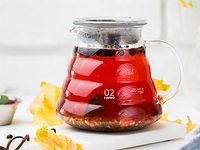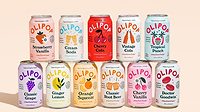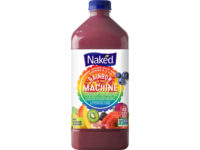2021 State of the Beverage Industry: Energy drinks flourish as consumers seek functionality
Energy shots hampered by impact of pandemic

In the fast-moving consumer packaged goods (CPG) market, consumers’ evolution in beverage choice has helped energy drinks “rise up.”
“The energy drink category is a strong performer within the wider non-alcoholic beverage industry, outpacing growth in other beverages,” states Chicago-based Mintel in its May 2020 report “Energy Drinks: Including Impact of COVID-19 – US.” “Combined energy drink and energy shot sales now surpass $14 billion, with sales projected to reach $20 billion by 2024.”
According to data from Chicago-based Information Resources Inc. (IRI), the overall energy drinks category accounted for $15 billion in sales for the 52 weeks ending May 16 in total U.S. multi-outlets. This is an 11.6% increase from the prior year. Driving that growth is the category’s non-aseptic segment, which accounted for nearly $14 billion in energy drink sales.
Chicago-based Euromonitor International notes that the energy market’s proposition of delivering vitality to consumers has helped it reach the status it has achieved today.
“The energy drinks category continues to diversify with new product launches and the expansion of use occasions through innovation. One of the most sought-after functional beverage benefits is energy,” the market research firm states in its “Energy Drinks in the US” report. “This has assured the energy drinks category’s continuing success. It also largely insulates it from concerns over sugar content and artificial ingredients. Artificial ingredients can even draw consumers in, as in the case of Bang energy and its hotly debated ‘super-creatine.’ While other high sugar and calorie beverages such as soda or juice continuously decline, energy drinks continue to succeed.”
Despite its functional status, energy drinks’ consumer reach has remained limited, Mintel’s report notes.

“Energy drinks have a dedicated base, yet that group represents a small slice (less than half) of U.S. consumers. And among non-users, products in the category come saddled with a less-than-positive reputation,” the report states. “The perception that energy drinks are too sugary, too artificial, contain too much caffeine or simply that they don’t taste good, presents a formidable barrier to trial. Despite loyalists that keep the category flourishing, conversion of non-users is extremely difficult, but necessary to sustain the sales trajectory for the long term.”
Roger Dilworth, senior analyst with New York-based Beverage Marketing Corporation (BMC), also highlighted the potential for brands to develop new energy drinks that evolves beyond the mainstream staples.
“As the mainstream end of the energy drink market is sewn up, there will continue to be more attempts to differentiate via novel ingredients, as seen in performance energy drinks, or better quality ingredients, such as guayusa, natural caffeine sources and organic cane sugar,” he said in Beverage Industry’s August 2020 eMagazine. “Companies will continue to experiment with making hybrids of energy drinks and other beverage types.”

In line with this, a multi-faceted team of fitness, health and beverage industry innovators, Dwayne Johnson, Dany Garcia, Dave Rienzi and John Shulman, announced the launch of ZOA, a reimagined energy drink packed with clean, natural caffeine from green coffee and green tea, antioxidants from camu camu and acerola, as well as vitamin D and a blend of vitamins and nutrients that support immune function and elevate energy levels.
The Molson Coors Beverage Co., Chicago, will be the exclusive distribution partner for all retail locations as the company has recently made a series of moves to expand their product offerings beyond beer. By utilizing Molson Coors and their partner L.A. Libations, ZOA will be able to tap into their vast distribution and retail network, as well as utilize their beverage expertise and marketing support, the company says.
As the energy market looks to capture a more diverse audience base, experts note that some focus groups have been more successful than others.
“There have been many attempts over the years to create a ‘better’ energy drink segment,” Dilworth said. “These have done modestly well, but the natural trend hasn’t yet taken off. Contrast that to the ‘performance energy’ segment, which seemingly emerged out of nowhere and skyrocketed in 2019, mostly due to Bang.”

Image courtesy of ZOA Energy
Mintel pinpoints that fitness energy drinks have carved out a niche with high-frequency consumers, but look unlikely to convert non-category users. Despite this subset’s favor with traditional energy drink consumers, the market research firm still expects fitness energy drinks to continue to grow.
“Though fitness energy drinks may eventually hit a sales ceiling, fitness energy drink brands will likely continue to capture a greater share of the energy drinks market (at least for the next few years),” the report states. “Fitness energy drinks may appeal to value-conscious consumers, as the drinks often are at a lower price point than traditional energy drinks (of the same size) and offer more caffeine (more bang for the buck); economic uncertainty will cause more consumers to seek products that offer a compelling value.”
Mintel’s report notes that although energy drinks likely were compressed because of stay-in-place restrictions across the United States, it suspects that energy shots saw a deeper hit because of the convenience factor associated with them.
“The energy shots segment will continue an already established slump that will likely be inflated by the impact of COVID-19,” the report states. “The more impulsive nature of energy shot consumption coupled with reliance on the convenience store channel will lead to a downturn in sales.”
In IRI data, the energy shots segment posted $932.8 million in sales for the 52 weeks ending May 16, representing a 3.4% decrease.
5-hour Energy continues to dominate the energy shot segment accounting for 88% market share. Earlier this year, the Farmington Hills, Mich.-based Living Essentials LLC’s brand launched its new promotion — as the Official Sponsor of Getting Stuff Done — its largest promotion to date, giving fans the chance to enter to win a share of $100,000 through June 30, it says.
The 5-hour ENERGY promotion gave consumers the chance to instantly win $10, $100 or $1,000 when the promotion kicked off on the first-ever Getting Stuff Done Day on Feb. 6. The first Saturday of February is an opportunity to re-evaluate New Year's resolutions, start planning a home project, clean up before the big game, or begin a new workout routine, the company said.
“Our customers depend on 5-hour ENERGY products to help them as they are Getting Stuff Done,” said Jeff Sigouin, president of Living Essentials, LLC, in a statement. “We’re excited that the Official Sponsor of Getting Stuff Done promotion provides multiple ways to enter for chances to win and rewards people with what they could use most of all, cash.”
Looking for a reprint of this article?
From high-res PDFs to custom plaques, order your copy today!











